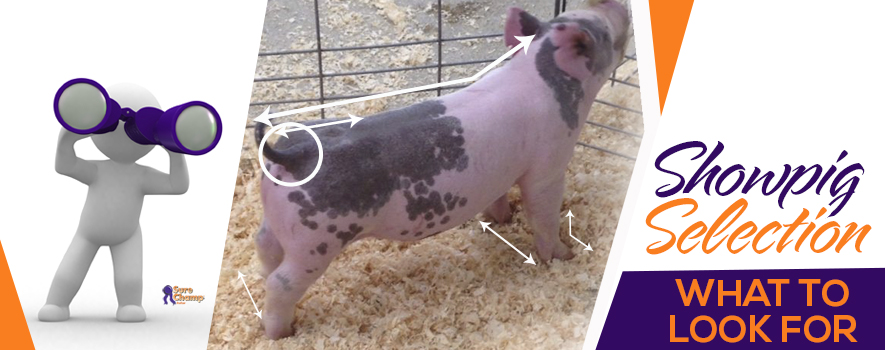
Before you are named Grand Champion, you must first find a baby pig with the makings of a champion. Mike McCoy of Real McCoy Genetics, would say it all starts with being structurally and skeletally sound so the pig has endurance in the show ring. McCoy believes the goal is to be the one that can last the longest in the ring, and you can’t achieve that without one that is correct in its build.
Here is what to look for:
A Good Spine
Look for looseness in the spine. A high, tight spine is an indicator of future structural problems. A barrow that is loose in its skeleton will naturally carry its head high and be flexible in its movement.
Good Hip Structure
Pay attention to the tail set on the pig to identify good hip structure. A barrow should have a high tail set and should extend long and level from its hooks to pins. This, in conjunction with a good spine, is an immediate indicator of skeletal correctness.
Good Feet
The pig’s feet should be square to the ground as it comes and goes. McCoy says to make sure weight is distributed evenly on all toes, and all four feet. This is an indicator that feet and joints are in line with the skeleton.
Good Pasterns
Pasterns shouldn’t be too flat, nor too upright. The hog should be comfortable on its feet with dewclaws not touching the surface.
A Good Stride
McCoy suggests both ends of a pig’s skeleton should drive in line with the body when it is on the move. Feet and legs should hit the ground square with all corners of its body while distributing weight evenly between both toes on each foot.
“Endurance is so crucial, especially when showing at the elite end,” McCoy said. “The best ones are generally the ones that have to drive the longest. If the entire skeleton is not working together correctly, the pig will not have the athleticism for the long drive, and a lot of times it is what gets you sorted back into the pen more quickly.”

